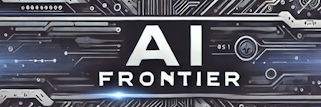Art and creativity have long been considered the bastions of human expression, untouched by the mechanized hand of technology. However, with the advent of Artificial Intelligence (AI), there has been growing apprehension about the future of human creativity. The article, “Rothko versus The Robots: How I learned how to stop worrying…”, published on Creative Boom explores this very apprehension and offers a fresh perspective on the role of AI in art and creativity. The author draws upon his personal journey to illustrate how AI is not a threat but a tool that enhances human creativity.
The Fear of AI in Art and Creativity
The introduction of AI in the realm of art has sparked debates and stirred fears about the impending ‘death’ of human creativity. There is a widespread notion that machines, with their ability to learn and replicate patterns, could potentially eclipse human artists. The fear is rooted in the idea that AI could replicate or even surpass human creativity, making artists redundant.
- AI art is perceived as a threat to human artists, sparking debates about the future of art and creativity.
- There is a fear that AI, with its ability to learn and replicate, could potentially eclipse human creativity.
AI as a Tool, Not a Threat
The author, however, argues against this notion. Through his journey of learning and understanding AI, he discovered that AI is not a threat, but a tool that can enhance human creativity. AI’s role in art is similar to any other art tool or medium; it’s a means to express creativity, not to replace it. AI can help artists explore new dimensions of creativity by providing them with unique patterns, structures, and techniques that could not be conceived by the human mind alone.
- AI is a tool for artists, not a replacement.
- AI can enhance human creativity by providing unique patterns, structures, and techniques.
The Intersection of Art and AI
Upon delving deeper into the intersection of AI and art, the author found that AI can create art that resonates with human emotions. By learning and replicating human-like patterns, AI can create art that is complex and emotionally engaging. This was evidenced by the sale of an AI-generated artwork, “Portrait of Edmond de Belamy,” at Christie’s auction for a staggering $432,500. This shows that AI-generated art can have a significant emotional impact on viewers, similar to traditional art.
- AI can create art that resonates with human emotions.
- An AI-generated artwork was sold at Christie’s auction for $432,500, indicating its emotional impact.
Demystifying AI in Art
The author emphasizes the need for demystifying AI in art. He urges artists and the art community to understand and embrace AI as a tool for creativity. To this end, he recommends educational courses and workshops to learn about AI in art. He cites the example of the [MIT Media Lab](https://www.media.mit.edu/), which offers several resources and courses on AI and art.
- There is a need to demystify AI in art.
- Educational courses and workshops can help artists understand and embrace AI.
Conclusion: Embracing AI in Art
In conclusion, the article confronts and dispels the fear of AI taking over human creativity in art. It emphasizes that AI is a tool that can enhance and not replace human creativity. It argues that AI can help artists explore new dimensions of creativity and produce art that resonates with human emotions. The author urges artists to demystify AI, embrace it as a tool, and leverage its potential to enhance their art. He concludes that the interplay of human creativity and AI could herald a new era in art, where ‘Rothko and Robots’ coexist and complement each other.
For more insights on the impact of AI on various sectors, check out our previous posts on AI in Healthcare and AI in Education.
